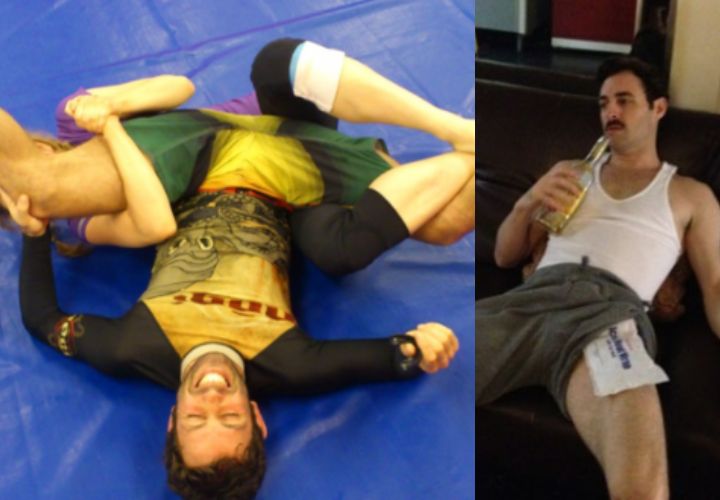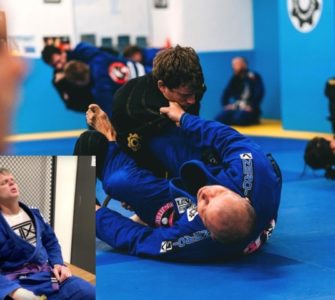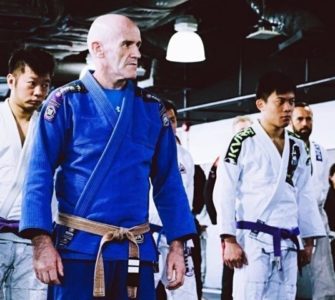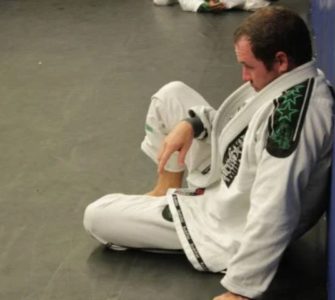Written by Kieren Lefevre.
Jiu Jitsu is destroying your body.
You must pay a fee every time you step onto the mats. No, I’m not talking about your gym membership fees but the cost to your body.
You have two options: Either pay with the damage to your body or invest your time and energy in implementing strategies on and off the mats.
When followed diligently, these strategies can reduce and reverse the damage Jiu Jitsu does to your body, offering a ray of hope for a healthier future.
Everyone has different reasons for training Jiu Jitsu. For some, their primary focus is self-defence; for others, it’s a great way to stay fit, and as a stress relief; and for the small minority, they want to pursue Jiu Jitsu and a career or at least take it more seriously.
Regardless of your reason for training, one common thread is that Jiu Jitsu carries the risk of injury and can have a long-term detrimental impact on your body.
Many people who train have accepted this fate and don’t care. There is a better approach, but it will cost you your time on and off the mats.
There are key areas to focus on, each with three principal elements.
These areas are:
- On the mats
- Off the mats.
We’re going to tackle on the mats first.
ON THE MATS
There are three elements to address in this area:
- Safety Principles
- Training Mentality & Intensity
- Adjusting Your Jiu Jitsu Game
SAFETY PRINCIPLES
Some positions in Jiu Jitsu carry a greater risk than offer. Some moves have too high a risk vs. reward and should only be reserved for competition or should not be performed at all (despite that they’re not “against the rules”).
But we cannot simply blame our sparring partners or fellow competitors. We must do the work to identify and educate ourselves on these areas that carry greater risk, what to look for, and what to avoid.
Here’s a simple example of a dangerous movement I no longer use to take the back.
By explosively pulling your opponent directly backwards from turtle to take their back you risk catastrophic injury to both of your opponents ankles. I used to do this back take a lot (especially in competition) at blue belt, an I no longer do after learning of the risks.
This back-take movement is one is one of many scenarios I’ve learned from Jordan Presinger’s (Jordan Teaches Jiu Jitsu) BJJ Mat Safety Course.
What NOT to do:
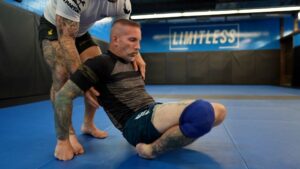
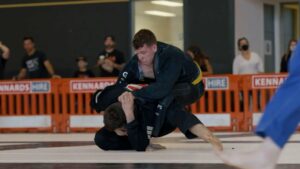
Do THIS instead:
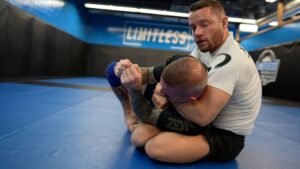
Another important safety principle is understanding that not everyone is “safe” to roll with. If you’re nursing an injury or an issue, try to avoid that 20-year-old, 250-lb, roided-up ex-football player with a history of ripping on submissions.
By taking ownership of your training, you can better protect yourself and your training partners on the mats without sacrificing your sparring intensity.
TRAINING MENTALITY & INTENSITY
Recently, I had a white belt join my gym who was still beginning their Jiu Jitsu journey but knew enough to be dangerous.
Some of the higher belts had observed this new guy going 110% maximum effort in each roll, attempting to rip submissions, and acting like he was competing in the ADCC finals.
When it came time for me to roll with the new guy, his intensity was maximum, with that “I just see red, bro” mentality. As an upper belt, I matched his intensity and secured many submissions during our six-minute roll.
The white belt then found the next day that his muscles were sore, his elbows were jacked up from trying to fight out of the submissions until the bitter end, and his general spazzy white belt antics.
While I admire the new guys’ training intensity, this is not a sustainable rolling practice.
We can all learn something from this. You do not need to go 100% daily during every single roll. Of course, tough training has its time and place and is a requirement for any competitive gym; however, trying to redline every session is going to lead to an early retirement of your Jiu-jitsu career.
I recommend having a couple of dedicated, tough rolls per session or reserving 1 or 2 days per week for more challenging training with sparring partners who are ready to get after it.
ADJUSTING YOUR JIU-JITSU GAME
There are seemingly endless movement possibilities in Jiu Jitsu, which makes it exciting and dynamic.
Different Jiu Jitsu “games” (styles of Jiu Jitsu) carry different long-term injury risks.
For example, if your Jiu Jitsu game is focused around leg-dominant passing with explosive knee cuts, then knee injuries, particularly torn ACL or LCL, are a real possibility (or even just chronic degradation of your knees).
Or maybe, like some guys I train with, you have had a hip replacement and cannot physically move into the body shape and positions required by some leg-first passing techniques; that’s where I recommend adjusting your Jiu-Jitsu game to a more chest and head dominant pressure passing style.
By modifying your game to avoid weak areas and promote your strengths, you’re staying safe on the mats, yet your Jiu Jitsu is still effective.
OFF THE MATS
There are three elements to address in this area:
- Strength & Conditioning to Armour Against Injury
- Mobility
- The 3 Pillars of Recovery
STRENGTH & CONDITIONING TO ARMOUR AGAINST INJURY
In the article ‘The Number 1 Reason to Lift Weights for BJJ,‘ I mentioned that 68.8% of grapplers will take at least one two-week absence from training due to injury over three years of grappling.
But the problem runs deeper than that, Jiu Jitsu can have a long term impact; when you don’t put in the work off the mats, it can slowly “destroy your body”.
Implementing a strength and conditioning protocol is the number one way to reduce your risk of injury off the mats.
The goals of your strength program should be:
- Focus on the critical areas of Jiu Jitsu movement patterns (squat, press, hinge, pull, core, grip carry rotation).
- 2-4 Sessions per week of about 45-90 minutes (including a comprehensive warm-up and cool-down).
- Implement autoregulation to modify the program’s intensity to your recovery levels (accounting for your Jiu-Jitsu training that week).
- Focus on your weaknesses (tight hips, poor range of motion, weak glutes, terrible rotation, continually tearing your rib cartilage, sore lower back, etc).
If you want to find the perfect program that focuses on your weaknesses, achieves your goals, and reduces your risk of injury, you can take my free program quiz here.
MOBILITY
Yoga doesn’t cut it.
There’s a big difference between flexibility and mobility.
Flexibility is being able to move through a greater range of motion.
Mobility is moving through a greater range of motion and being strong throughout that range.
You don’t have to become a yoga expert or stretch for hours.
Here’s a practical way (in priority order) to get your mobility work in:
- Implement a mobility-focused warm-up and cool-down before and after Jiu Jitsu training (download a free mobility program here).
- Do a 10-15-minute mobility/stretching session in the morning or evening (I recommend the 30-Day Jiu Jitsu Mobility Challenge).
- If you really want to improve your mobility, follow a mobility—and strength-focused program (I recommend my 12-week BJJ Move program).
THE 3 PILLARS OF RECOVERY
I could dedicate an entire video podcast to the three pillars of recovery for BJJ. Oh, wait, I already have.
The 3 Pillars of Recovery for BJJ are fundamental principles you must address before attempting anything else.
These core principals are the primary drivers that move the needle on your recovery, and they are in order of priority:
- Sleep
- Nutrition
- Training Intensity
SLEEP
There’s a reason you’ve heard this a million times before; it’s inescapable. Sleep is the most critical part of recovery.
It’s easier said than done, but aim for 7-9 hours of sleep each night.
NUTRITION
Nutrition for Jiu Jitsu is nutrition for sports performance.
One of the most common mistakes I see BJJ athletes making is they need to eat more (especially carbs).
Cutting carbohydrates is a common nutrition tactic among BJJ guys trying to make weight for a competition.
And it’s stupid.
When you consume carbohydrates, you replenish your glycogen stores in your muscles. When doing a high-intensity training session like BJJ sparring, glycogen is the energy source your body needs to perform.
Reducing your carbohydrate intake can negatively affect your ability to recover and sleep and make it harder to lose weight for competitions.
Prioritise healthy sources of carbohydrates and protein, especially after training.
Check out this video if you want to develop your own nutrition plan for Jiu Jitsu performance.
TRAINING INTENSITY
With training intensity, I’m talking about regulating your training to avoid putting yourself in a state known as ‘Non-Functioning Overreaching’.
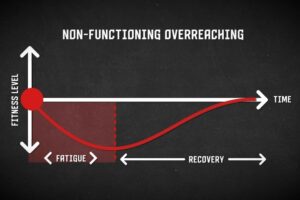
When your training stimulus exceeds your ability to recover, this is called non-functional overreaching. It means you will end up where you started (or your training will reduce your performance and make you worse).
Grappling has a high physical demand on your body; it causes a tremendous amount of training stimulus. When I tried to maintain a 5-6 day per week training program, this tipped me over the edge of what’s sustainable and recoverable.
The result was worse performance in the weights room and on the Jiu Jitsu mats (and I felt terrible).
To solve this problem, I scaled back to 2-3 strength & conditioning sessions per week designed for grappling performance. I also implemented auto-regulation to ‘regulate’ my training to the demands of grappling for that week.
I went from non-functioning overreaching to functioning overreaching.
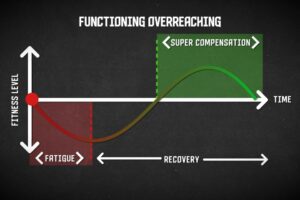
DON’T LET JIU-JITSU DESTROY YOUR BODY
Don’t destroy your body for a hobby.
Put in the work both on and off the mats because either way, you need to pay the Jiu-Jitsu fee, whether it’s in your personal time to implement the strategies outlined in this article or in the potential short-term and long-term damage to your body.
If you want to learn more about how to level up your performance on and off the mats and reduce your risk of injury, check out BJJ Strong Online.

